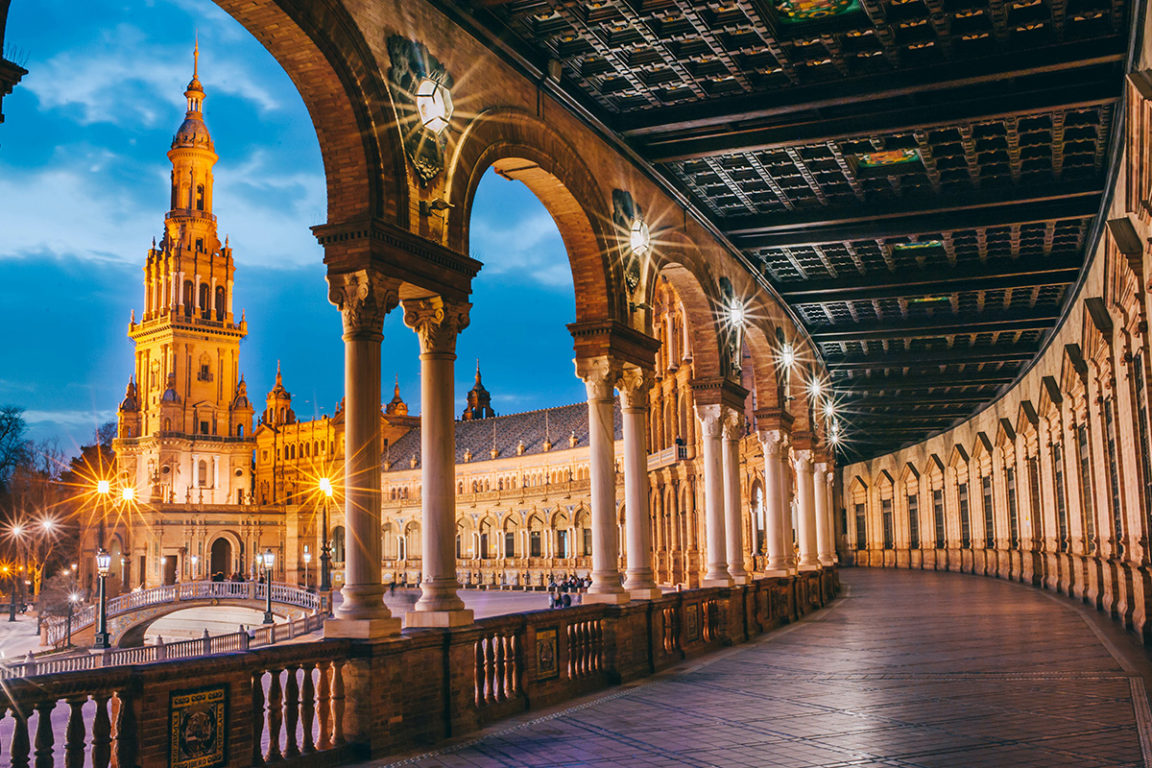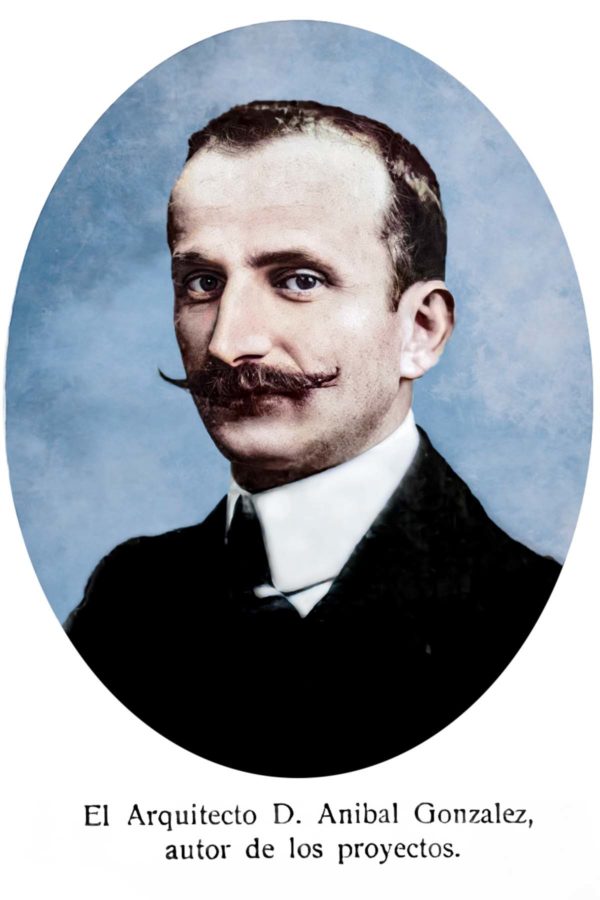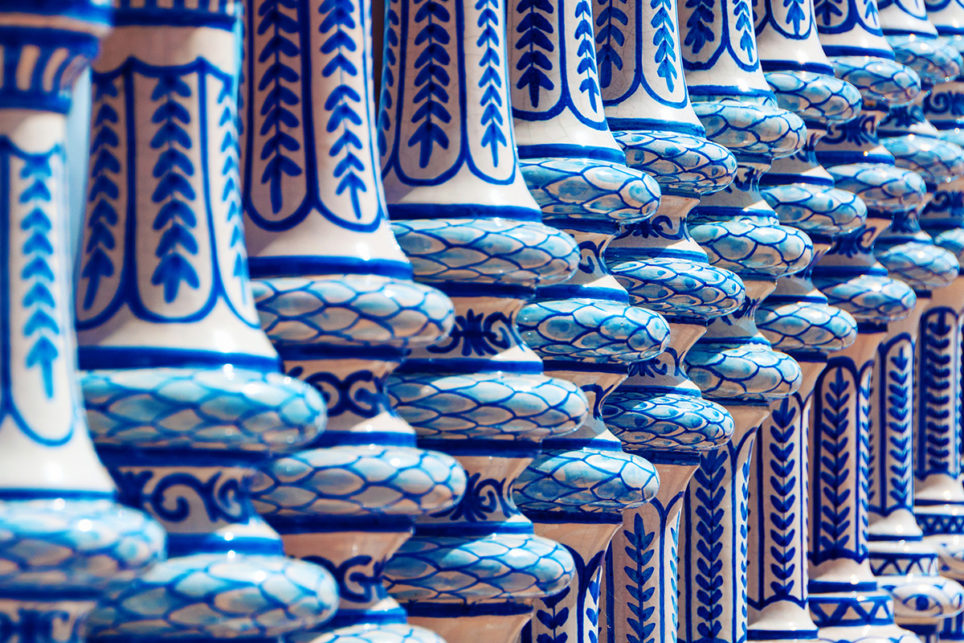Plaza de España & the Maria Luisa Park | Seville

Many Spanish cities compete in claiming the most beautiful plaza (square) in Spain. Most people, however, agree that the winner is Seville with its incredible Plaza de España. The square was completed in 1928 and covered 50,000 m² (495,000 ft²), almost the size of five football fields.
The Ibero-American Fair of 1929
Translating to “Spanish Square”, the plaza was laid out for the Ibero-American Exposition of 1929. The exhibition was organised by Spain’s dictator at the time, General Miguel Primo de Rivera, who, along with King Alfonso XIII, was trying to improve relations between Spain, its former colonies, and the United States of America.
At the same time, in Barcelona, all other countries were represented at a separate and more extensive exhibition, the International Exposition.



Plaza de España: One of the square's two towers representing the Pillars of Hercules 



Plaza de España: A horse & carriage ride is one of the popular ways to see the plaza 
Plaza de España: The square was used for some scenes in Star Wars II - Attack of the Clones 
Plaza de Espana: The plaza is just as impressive in the evening
General Miguel Primo de Rivera
Miguel Primo de Rivera was a dictator, aristocrat, and Spanish military officer who served as Prime Minister from 1923-30. He believed that the politicians destroyed Spain, and the country would prosper again if he governed it without them. Unfortunately, history doesn’t look kindly on him, as he ruined the monarchy and created a divide that would lead to the Spanish Civil War.
The Maria Luisa Park
The city of Seville took almost 19 years to prepare for the exhibition, with the most buildings constructed in the newly created Parque de Maria Luisa or the Maria Luisa Park. The grounds used for the park were previously the gardens of the San Telmo Palace, a building that today is the Parliament of Andalusia.
In 1893, Princess Maria Luisa, the youngest daughter of King Ferdinand VII, donated the gardens to the city to be open to the public. Began in 1911, the park covers more than 100 acres (40 hectares), making it one of the largest in the city of Seville.
The park is also the home of several monuments, ponds, fountains, and statues. These include the Fuentes de Los Leones or Lions Fountains, the Estanque le Los Lotos or the Water-lily Pool, and figures of Spanish writers such as Bécquer and Cervantes.




The Pavilions
For the Ibero-American Exposition, eleven countries designed and constructed a pavilion to showcase their country, history, and people. The largest of them was the Peruvian pavilion, which included a vast archaeological collection and a pack of five llamas grazing on the pavilion grounds.
Various architects also built pavilions for Columbia, Brazil, Chile, Mexico, Argentina, Uruguay, Cuba, Dominican Republic, Guatemala, and Venezuela. There were also pavilions dedicated to each of the regions of Spain, the four ancient kingdoms of Spain, the provinces of Andalusia, and the city of Seville.
In total, they built 117 buildings for the exhibition, of which 25 remain. These buildings were built as permanent structures to be used after the fair. Today many of the pavilions have been converted into Consulates, museums, and schools. The Argentinian pavilion is now a flamenco school, and the Seville one is now a casino.
The highlight of the exhibition was, undoubtedly, the incredible square designed by Aníbal González, Plaza de España


Plaza de España
The square is a massive semicircle with a continuous building around the curved edge. This building is accessible by crossing a 500 m (1640 ft) moat using four bridges. The four bridges represent the four ancient kingdoms of Spain, Castilla, Léon, Navarre, and Aragon. In the centre of the square is the fountain dedicated to the Spanish architect Vincente Taver y Tomás, who replaced González in 1926.
The Tiled Alcoves
One of the most impressive features of Plaza de España is the tiled alcoves. Into the facade facing the moat, they built 48 alcoves representing the provinces of Spain. Each includes a map, coat of arms, and a central scene from the province’s history, all designed on colourful azulejos or painted ceramic tiles.
Covered bookshelves flanked the alcoves that, during the exposition, contained pamphlets with information about each province. Today they are the backdrop of many visitors’ colourful photos taken in their home province.


The main building
González built the principal building was to showcase Spain’s industrial and technological achievements. He designed the semi-circular structure to include many architectural elements for which Spain is known. These included Art Deco, Baroque, Renaissance, Arabic, and Roman.
Spain spent a fortune developing its exhibits for the fair held in the main pavilion. The largest of the exhibition was the ¨Salón del Descubrimento de América¨. It contained documents, maps and other objects related to the discovery of the Americas. The highlights of the collections were a set of 120 letters and manuscripts that belonged to Christopher Columbus, the last testament of the conquistador Hernán Cortes.
At each end of the main building are towers that provide the area with a perfect balance. González dedicated each tower to the mythical Pillars of Hercules, and you can see them from almost every part of the city.
On the façade, above the first level of the main building, are a series of medallions representing Spanish kings along with scientists, explorers, writers, and other distinguished people from Spanish history.


Was the Ibero-American Exposition a success?
In the end, the exhibition never reached the grand heights that were hoped, mainly due to the depression beginning in the U.S. the same year. Many visitors that planned to come couldn’t. As a result, they cut the fair short, finishing on June 21, 1930.
What was left behind, however, is one of the most iconic buildings in Spain, Plaza de España
Today, Plaza de España mainly consists of government buildings for the administration of Seville. Unlike what many people think, the Town Hall of Seville or the Casa Consistorial de Seville is not located here.
Many movies have used Plaza de España as a backdrop, including the 1962 “Lawrence of Arabia” and” Star Wars Episode 1: The Phantom menace” in 1999. In 2002, it featured in “Star Wars Episode II: Attack of the Clones” as the exterior shots of the city of Theed on Planet Nabob. It also was used for scenes in the 2012 film “The Dictator.”
Don’t forget to look at some fantastic trips by bwd vacations that visit Seville, Spain. They include tours by Trafalgar, Insight Vacations, Luxury Gold, Costsaver and Uniworld Cruises.
Take Care, and I will see you when you get here.